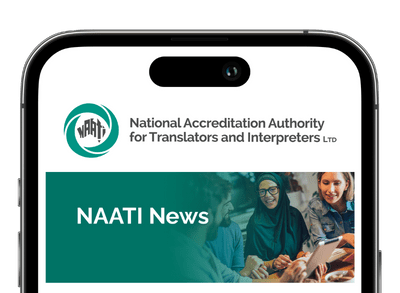Every year NAATI adds more and more languages to its catalogue, increasing the number for T&I certification and underscoring our commitment to ‘a connected community without language barriers.’
Where do these languages come from? Who speaks them? Why are they important to Australia?
In this occasional post, we will shed light on new languages as they are added to the certification program, both as a means of breaking down barriers and creating a better understanding of our fellow Australians.
This week I want to give you a couple of brief stories about recent additions in 2020 – Pashto and Swahili, both of which have relatively small numbers of speakers in Australia, but significant numbers globally.
Pashto is spoken by more than 38 million people globally and approximately 9,000 in Australia.
Also spelled Pashtu and called Pakhtu, it is a member of the Iranian division of the Indo-Iranian group of Indo-European languages. Pashto is one of the two national languages of Afghanistan, the other being Dari (Persian).
It is the native language of the indigenous Pashtun people, found primarily between an area south of the Amu Darya in Afghanistan and west of the Indus River in Pakistan. Not surprisingly, most Pashto speakers live in Afghanistan or Pakistan, but smaller communities exist in Iran, Tajikistan, the United Arab Emirates, the United Kingdom, and Australia.
Interestingly, Pashto poetry became very popular among the Pashtuns in the 17th century. Famous Pashto poets include Khushal Khan Khattak, Rahman Baba, Nazo Tokhi, and Ahmad Shah Durrani.
Durrani was the founder of the modern state of Afghanistan and his most famous poem was Love of a Nation.
Swahili is spoken by more than 98 million people globally and by about 11,000 in Australia.
The Swahili language dates its origin to the Bantu people on the coast of East Africa, and its name derives from the Arabic for ‘coast.’ It is estimated that about 30% of the Swahili vocabulary is derived from loan words, the majority Arabic, with other contributing languages including Persian, Hindustani, Portuguese, and Malay.
Swahili serves as the national language for the Democratic Republic of the Congo, Kenya, Tanzania, and Uganda; it is also one of the lingua franca of the African Great Lakes region and other parts of East and Southern Africa.
As mentioned earlier, the language has been greatly influenced by Arabic, and in the early 19th century, the spread of Swahili inland in Africa received a great impetus as the language of the Arab ivory and slave caravans, which traveled as far north as Uganda and as far west as Congo.
In future ‘Who Knew?’ posts we will be dedicating a complete post to a single language as they are introduced into NAATI’s catalogue. Providing more depth and more interesting facts that will give you a sense of their history and cultural influences. And, at the very least, an idea of where in the world these languages originate.
The Encyclopedia Britannica and Wikipedia are currently my main information sources, so I welcome feedback from anyone that has an interest in updating the facts or correcting my mistakes.
For me, this is a unique opportunity to learn a little bit more about my fellow Australians and share this knowledge with you.
